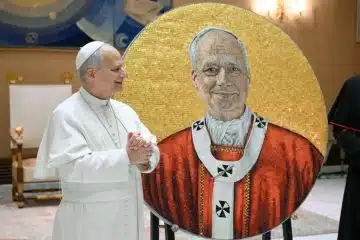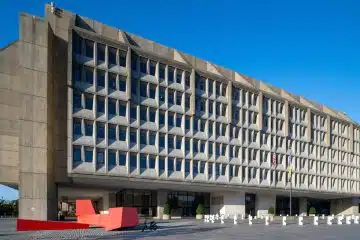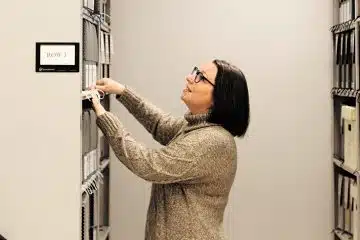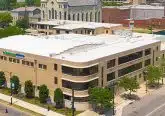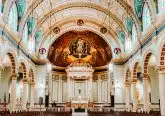Forged in Flood: Dayton’s St. Joseph Church founded in 1847 despite record-setting-flood
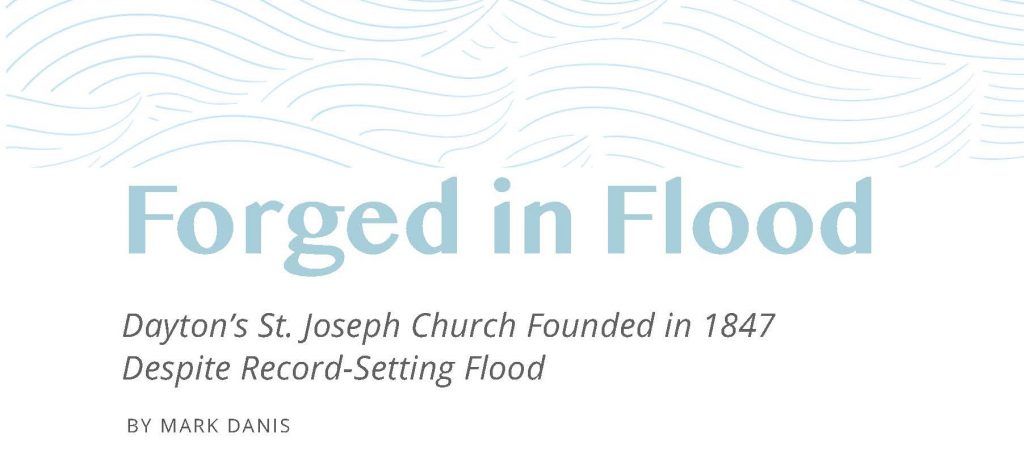
On Jan. 2, 1847, at 2:00 in the morning, the bells in Dayton rang out signaling another historic flood was deluging the city. The Mad and Miami Rivers crested and broke through their levees. The East Side was completely flooded and a contractor responsible for the construction of Dayton’s newest church watched helplessly as more than $1,500 of stockpiled lumber floated away.
“Go to Joseph.” The Catholic faithful of Dayton have long lived by that advice.
“Go to Joseph” is the key theme of Pope Francis’ most recent Apostolic Letter, Patris corde. The document marks the 150th anniversary of St. Joseph as Patron of the Universal Church and proclaims the Year of St. Joseph, which runs until Dec. 8. Pope Francis identifies Joseph as the saint who, “stands at the crossroads between the Old and the New Testaments.” In the rich history of devotion to him, St. Joseph has often been invoked as the builder of a brighter future.
In late 1846, the phrase, “Go to Joseph,” was the sentiment of a group of largely Irish Catholics in Dayton. They represented the English-speaking parishioners of the predominantly German-speaking Emmanuel Catholic Church. Emmanuel, established in 1837, is the oldest Catholic Church in Dayton, and its early English- speaking parishioners were initially content to quietly worship alongside their German- speaking brothers and sisters.
But, as Pope Francis points out in his Apostolic Letter, “Saint Joseph reminds us that those who appear hidden or in the shadows, can play an incomparable role in the history of salvation.” The founding of one of Dayton’s great parishes would ultimately find its patron in the guise of a simple, silent carpenter.
On Nov. 1, 1846, Father Patrick O’Mealy, a newly-ordained, 22-year-old priest, led the first planning meeting for a new Dayton church. Because the English-speaking parishioners of Emmanuel always sat on the side of the church facing St. Joseph’s statue, St. Joseph
became the patron of their new parish. In December of that year, they purchased two lots and hired a contractor who immediately began stockpiling material for the new church’s construction.
The founders of St. Joseph Church in Dayton submitted to the patronage of the foster father of Jesus. And in the words of Pope Francis, “A man does not become a father simply by bringing a child into the world, but by taking responsibility to care for that child.”
Pope Francis shares many powerful and consoling messages in his document, but none more appropriate for us than the message the angel of the Lord directed to Joseph prior to his marriage to a pregnant Mary: “Do not be afraid.”
Some of the building material from the 1847 flood was eventually recovered, and construction on St. Joseph Church began in May of that year. Bishop Purcell laid the cornerstone on July 11, 1847, and St. Joseph Church was ultimately completed in the summer of 1848.
As is so often the case, the Church goes to St. Joseph in the midst of tumultuous transitions. Such is the case today, as it was in 1846. But the Holy Father’s words provide us with sound advice that will see us through all these difficulties: “Do not be afraid, Go to Joseph.”
This article appeared in the March 2021 edition of The Catholic Telegraph Magazine. For your complimentary subscription, click here.





